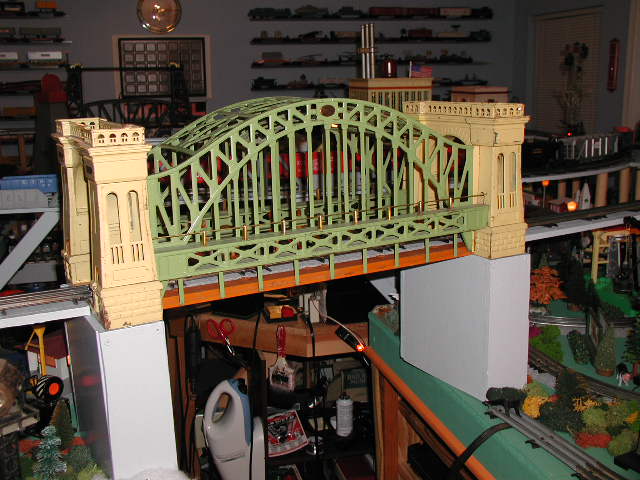Schwarz
View current page
...more recent posts

lionel hellgate bridge
runs on batteries not seeds
what is it about architects ?
via selma
copyrighted public space
I've Heard About Node 1
A viab would produce structures that are not set and specific, but impermanent and malleable - merely viable - made of a uniform, recyclable substance like adobe. The automaton's output would have no innate design, boundaries, or service life. It would take whatever form was called for at the moment - a great rotting blooming stony bubble of a building that, unlike all previous forms of human habitation, would be unplanned, responsive, densely monitored, massively customized, and rock-solid, with all modern conveniences.
The closest thing to a viab today is a small, modest mud-working robot invented by Behrokh Khoshnevis, a professor of engineering at the University of Southern California. Khoshnevis' "contour crafter" works more or less like a 3-D printer, but it's meant to assemble whole buildings. Its nozzle spits wet cement while a programmable trowel smoothes the goo into place. Roche encountered Khoshnevis, and his agile imagination immediately started pushing the idea toward its limits.
From the nineteenth century on, the house has been seen as a private refuge, and a place (for the husband) to relax after a hard day’s work. In Germany, this view went hand in hand with reformist efforts to allow all social classes to limit their households to members of the immediate family.
This article analyzes the physical manifestation of these efforts, by using both photos and plans of representative houses, and film images in which use of the spaces is shown. The analysis concentrates on the boundaries between the private house and the public street, looking at this space both historically up to 1945, and in its evolution during the postwar era.
The privatization of individual family space takes on new meaning, as “openness” of the house is limited only to the house’s interior, while the boundary between inside and out remains impermeable. A new spatial freedom thus seems only possible in spaces that can be privately controlled.
While the house turns more and more away from any interaction with the public street, the inside of the house expresses a new parity and democracy within the family. Both an increased accessibility and larger allotment of spaces to the children are indicative of a new family atmosphere. This condition helps to soften the impermeability of the house itself, even as its built appearance retains its defensive stance.
cloud-cuckoo-land
The construction of Santiago Calatrava's $35 million townhome cubes in the sky has received a "go" from the New York City Department of Buildings.
